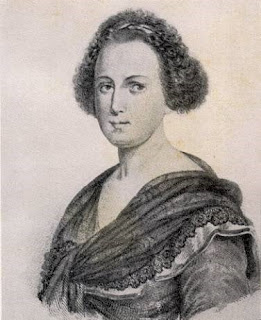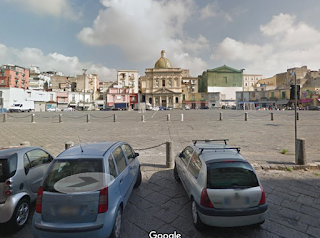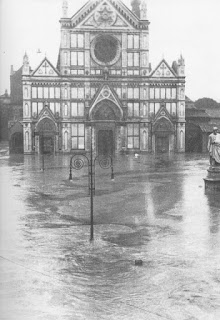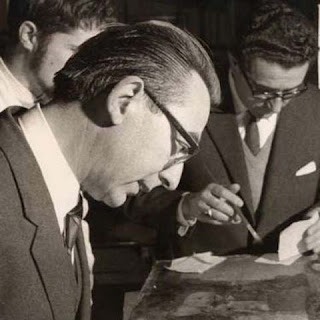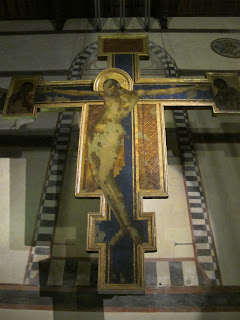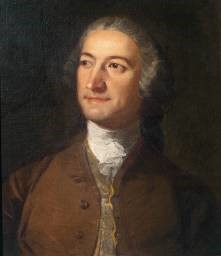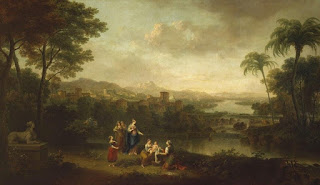Author’s heroes and stories are still part of popular culture
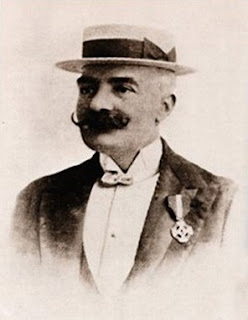 |
| The novelist Emilio Salgari, photographed in the early 20th century |
Emilio Salgari, who is considered the father of Italian
adventure fiction, was born on this day in 1862 in Verona.
Despite producing a long list of novels that were widely
read in Italy, many of which were turned into films, Salgari never earned much money from his work. His life was blighted
by depression and he committed suicide in 1911.
But he is still among the 40 most translated Italian authors
and his most popular novels have been adapted as comics, animated series and
films. Although he was not given the credit at the time, he is now considered
the grandfather of the Spaghetti Western.
Salgari was born into a family of modest means and from a
young age wanted to go to sea. He studied seamanship at a naval academy in
Venice but was considered not good enough academically and never graduated.
He started writing as a reporter on the Verona daily newspaper La
Nuova Arena, which published some of his fiction as serials. He developed a
reputation for having lived a life of adventure and claimed to have explored
the Sudan, met Buffalo Bill in Nebraska and sailed the Seven Seas. He actually
met Buffalo Bill during his Wild West Show tour of Italy and never ventured
further than the Adriatic.
He turned his passion for exploration and discovery into
adventure fiction, signing his stories, Captain Salgari.
 |
| The cover of Salgari's 1900 novel, Le Tigri di Mompracem (The Tigers of Monpracem) |
He once had to defend his pen name by fighting a duel, after
his claim to the title was questioned.
Salgari married Ida Peruzzi, with whom he had four children,
but despite his popularity in Italy and many countries abroad, he earned little money from his books and the family had to live hand to mouth.
In 1889 Salgari’s father committed suicide, then in 1903 Ida
became ill and Salgari struggled to pay her medical bills. He became
increasingly depressed and attempted suicide in 1910.
After Ida was committed to a mental hospital in 1911,
Salgari took his own life by imitating the Japanese ritual of seppuku,
disemboweling himself in the style of a samurai warrior.
He left a letter for his publisher, saying: ‘To you that
have grown rich from the sweat of my brow while keeping myself and my family in
misery, I ask only that from those profits you find the funds to pay for my
funeral. I salute you while I break my pen. Emilio Salgari.’ One of his sons
was also to commit suicide in 1933.
By the time he died, Salgari had written more than 200
adventure stories and novels set in exotic locations, inspired by reading
foreign literature, travel magazines and encyclopediae.
His major series were The Pirates of Malaysia, The Black
Corsair Saga and the The Pirates of Bermuda. He also wrote adventures set in
the west of America. His heroes were pirates and outlaws fighting against greed
and corruption.
 |
| Sergio Leone is said to have been a fan of Salgari's books, said to have been the inspiration for his Spaghetti Westerns |
He opposed colonisation and his legendary hero, the pirate
Sandokan, led his men in attacks against the Dutch and British fleets.
His books had been so popular that his publisher hired other
writers to produce stories in Salgari’s name after his death, but no other
Italian adventure writer was ever as successful as Salgari.
His style spread to films and television, with Sergio
Leone’s outlaw heroes in his Spaghetti Westerns being inspired by Salgari’s
characters.
Among the 50 film adaptations of Salgari’s novels is Morgan
the Pirate, starring Steve Reeves.
His books were enjoyed by celebrities such as Federico
Fellini, Pietro Mascagni, Umberto Eco and Che Guevara.
In the late 1990s, new translations of his novels began to
be published and in 2001 the National Salgari Association was founded in Italy
to celebrate his work.
It has been suggested that the first film adaptation of a
Salgari novel was Cabiria, directed by Giovanni Pastrone, which bears many
similarities to Salgari’s 1908 adventure novel, Carthage is Burning.
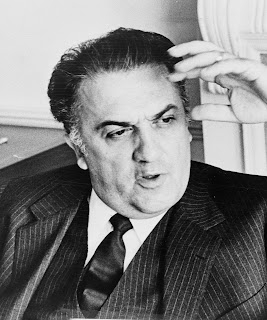 |
| Federico Fellini was another fan |
Gabriele D’Annunzio was billed as the official screenwriter
but he came on board only after the film had been shot to change some of the
names and captions.
Vitale di Stefano then brought Salgari’s pirates to the big
screen in the early 1920s with a series of films that included The Black
Corsair and The Queen of the Caribbean.
Salgari’s popular character, Sandokan, was played by Steve
Reeves in Sandokan the Great and The Pirates of Malaysia. A Sandokan television miniseries later appeared throughout
Europe starring Kabir Bedi in the title role.
Earlier this year, Neapolitan anti-mafia investigators
announced plans to indict Francesco 'Sandokan' Schiavone, for the killing of a
policeman in 1989. The gangster’s nickname shows Salgari’s character still has
influence today, more than a century after his creator’s death.
 |
| The Arena at Verona, the city's most famous landmark |
Travel tip:
Emilio Salgari was born in Verona, which was made famous by
another writer as the city of Romeo and Juliet. He began his writing career on
the daily Nuova Arena newspaper, now called L’Arena, which was founded in 1866
before the Veneto became part of the Kingdom of Italy and is one of the oldest
newspapers in Italy. Named after L’Arena, the Roman amphitheatre in Piazza Bra
that hosts concerts and operas, the newspaper is now based in San Martino Buon
Albergo, a small town just outside Verona.
 |
| The imposing entrance to the Cimitero Monumentale |
Travel tip:
After his dramatic death, Emilio Salgari was laid to rest in
the Cimitero Monumentale just outside the city walls of Verona in Piazzale del
Cimitero. Designed by Giuseppe Barbieri in 1829, the cemetery has an impressive
neo-classical façade with two carved lions on each side of the steps. These
have prompted the Veronese to refer to the cemetery as Hotel dei Leoni, the
hotel of the lions.
